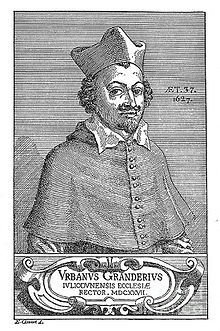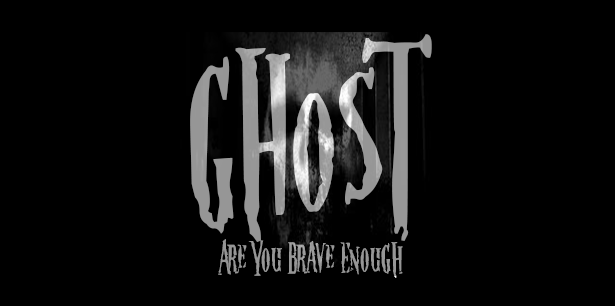
In the dimly lit annals of history, there exists a tale of malevolence, mysticism, and madness that haunts the very soul of the Kingdom of France. It is a tale known as the Loudun possessions, a grim dance with the forces of darkness that unfolded in the year of our Lord 1634. Gather 'round, dear reader, as we delve into the macabre and mysterious world of Urbain Grandier, a priest whose fate was sealed in the crucible of fear and fanaticism.
Urbain Grandier, a name now etched in infamy, found himself ensnared in the clutches of the Loudun possessions, a saga that unfurled within the confines of the Ursuline convent. In the quaint town of Loudun, nestled in the heart of Poitou, a storm brewed as the Crown, under the rule of Louis XIII, sought to dismantle the town's protective walls. It was a divisive moment; the Huguenots yearned to keep those walls standing, while the devout Catholics rallied behind the monarchy. The plague, an unforgiving scourge, descended upon Loudun in May 1632, claiming countless lives. These trials and tribulations cast a pall of unease upon the town.
Urbain Grandier, a charismatic and educated priest, was a figure of both envy and controversy.

He dared to challenge the policies of Cardinal Richelieu, championing the preservation of the town's fortifications. A cloud of scandal hung over him as whispers of a forbidden liaison with Philippa Trincant, the daughter of his close friend, Louis Trincant, the King's prosecutor in Loudun, swirled through the town.
But it wasn't just whispers that plagued Grandier's reputation. He had incurred the wrath of husbands and fathers, some of them influential figures, by allegedly defiling the sanctity of their households with illicit affairs. Jacques de Thibault, possibly related to Philippa, had been particularly vocal in his disdain for Grandier's behavior. A violent confrontation ensued, leading to a trial and Grandier's eventual banishment from performing priestly duties in Loudun.
The stage was set for a tragedy that would shake Loudun to its core. In 1626, the Ursuline Convent had opened its doors in the town. By 1632, under the leadership of Prioress Jeanne des Anges, the convent counted seventeen nuns, their average age a tender twenty-five. It was during the waning days of the plague that the first ominous whispers of demonic possession emerged. As physicians and the wealthy fled the town's grasp, the nuns retreated behind the convent's walls, shutting out the outside world.

young nun claimed to have seen a vision of her recently departed confessor, Father Moussant, and soon, others echoed her eerie testimony. Canon Jean Mignon, the convent's chaplain and nephew of Louis Trincant, deemed it necessary to initiate a series of exorcisms. Skepticism gripped the town, with some labeling it an imposture.
The possessed nuns declared that a demon named Asmodai had descended upon them, committing vile and impudent acts. As interrogations ensued, the identity of the alleged malefactor changed from a vague priest to Peter and Zabulon. It wasn't until October 11 that Urbain Grandier's name was ominously invoked, despite none of the nuns having ever met him. The supposed physicians and apothecaries were brought in, and Canon Mignon apprised the local magistrates of these bizarre events.
The Archbishop of Bordeaux intervened, sequestering the nuns and temporarily quelling the possessions. But the nuns' frenzied behavior persisted, drawing spectators like moths to a flame. Cardinal Richelieu, already at odds with Grandier for opposing the demolition of the town walls and for his scathing satire, decided to take center stage.
Enter Jean de Laubardemont, dispatched to tear down the town tower, but thwarted by the town militia. He reported the tumultuous affairs in Loudun to Paris, leading to an official investigation. Grandier, apprehended to prevent his escape, faced a barrage of accusations, from clandestine visits to the convent to indecent conduct.
In a tragic turn of events, Grandier, who had vehemently opposed the wall's destruction, now found himself in the clutches of forces more sinister. The trial unfolded, leading to a damning verdict: Grandier was found guilty of sorcery and accused of bewitching the Ursuline nuns. The sentence was nothing short of a descent into hellfire—a public burning at the stake, the searing flames of retribution.

As the execution day dawned, Grandier was given one last chance to speak, but his words were drowned by holy water, an act of cruelty. The execution, as historian Robert Rapley notes, deviated from its intended course, with exorcist Lactance kindling the pyre before Grandier could meet the hangman's noose. The flames engulfed him, and his torment was an inferno that defied the boundaries of human suffering.
Yet, the echoes of possession refused to fade. Exorcisms persisted for years, haunting the Ursuline convent until 1637, three long years after Grandier's agonizing demise. It was a dark chapter in history, and some attribute the cessation of exorcisms to the Mother Superior, Sister Jeanne of the Angels, who embarked on a pilgrimage for deliverance.
In the annals of post-historical analysis, conflicting narratives emerge. John Locke, the English philosopher, cast doubt on the entire affair, viewing it as a sinister concoction by Cardinal Richelieu to silence Grandier, a man who dared to oppose him. Agénor de Gasparin suggested that the initial "demonic manifestations" might have been pranks played by boarding students, escalating under the influence of Chaplain Jean Mignon.
Michel de Certeau, in his piercing examination, delved into the psychology of the nuns, attributing their symptoms to hysteria and exploring the intellectual climate of 17th-century France. He viewed possession as a vessel through which the nuns could articulate their fears and anxieties in a world dominated by men.
The events in Loudun unfolded over the years, serving as a chilling political theater, where Grandier became a sacrificial lamb, deflecting the town's ambivalence toward the authority in Paris. Aldous Huxley ventured further, positing that the accusations stemmed from Sister Jeanne's infatuation with Grandier, who had spurned her advances. A complex web of jealousy and intrigue enveloped this somber tale.
Augustin Calmet and others drew parallels between the Loudun case and other alleged possessions, highlighting the political ambitions and thirst for attention that fueled the tragedy. Calmet placed the blame squarely on Cardinal Richelieu's shoulders, suggesting that Grandier's opposition to the demolition of Loudun's fortifications sealed his fate.
The walls of Loudun, once a symbol of protection, ultimately became the backdrop for a tragic tale of manipulation, malevolence, and mysticism. Urbain Grandier, the priest who dared to defy, paid the ultimate price, his life consumed by the fires of the Loudun possessions.

Comments